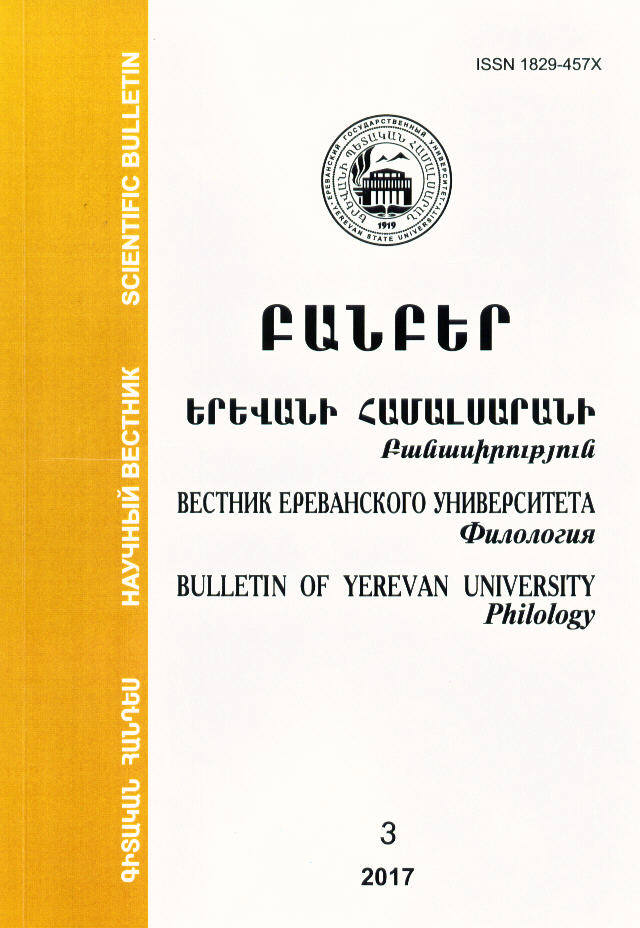The Diachronic and Synchronic Aspects of the Old Armenian Sonorant ւ(ṷ)
DOI:
https://doi.org/10.46991/BYSU:B/2017.8.3.011Keywords:
phoneme and sub-phoneme, additional distribution, pre-writing Armenian, labial sonorant, synchronic and diachronic aspectsAbstract
The etymological prototype and phonemic nature of the sonorant ւ are among the most intricate realities of the Old Armenian phonemic system. The historical-comparative and typological analysis of the issue under discussion reveals that 1) Old Armenian is one of the few Indo European languages together with Hittite, Gothic, Latin and Old Iranian languages, where the Indo European *ṷ has preserved its labial nature to this day. 2) The Old Armenian ւ is mostly the result of the consistent development of the phoneme <*Ṷ> with certain similarities with both its sonorant (*u) and consonant (*ṷ). 3) In Old Armenian the phonemic system ւ(ṷ) possessed a weak phonemic nature, this being the reason why it was replaced by վ(v) after the Late Grabar period.
Downloads
Published
How to Cite
Issue
Section
License
Copyright (c) 2021 Bulletin of Yerevan University

This work is licensed under a Creative Commons Attribution-NonCommercial 4.0 International License.

